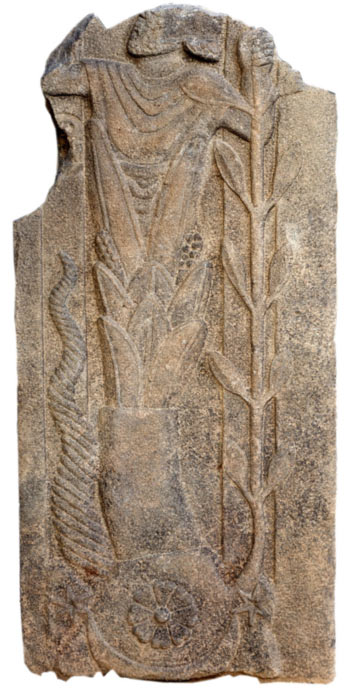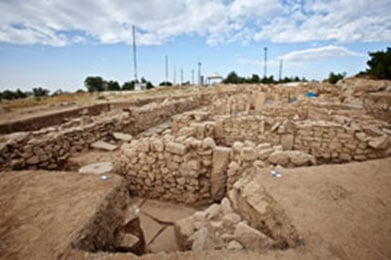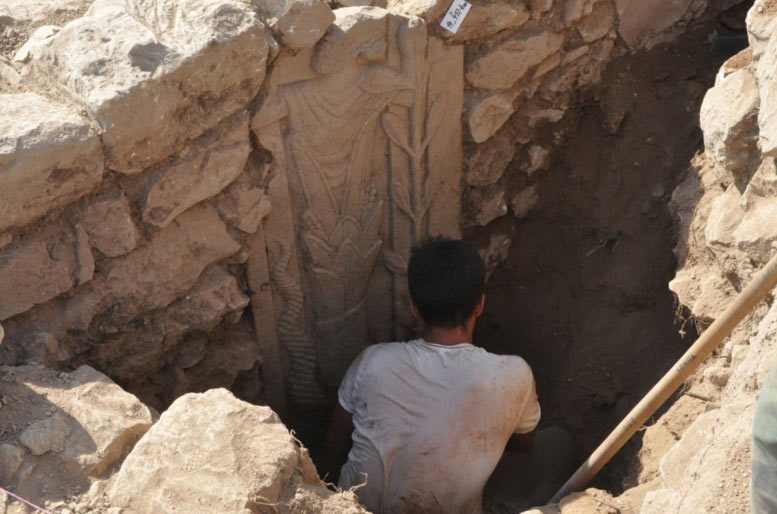11 NOVEMBER, 2014 - 22:20 LIZLEAFLOOR
Unknown ancient god with astral symbols discovered on stele at cult site in Turkey
An unidentified, ancient bearded god with astral symbols has been uncovered during an excavation of a sanctuary near the ancient city of Doliche in Southeast Turkey.
The excavation team of 60 researchers and archaeologists from University of Münster and Germany’s Cluster of Excellence has been investigating a 2,000-year-old cult site. The sanctuary’s grounds reveal much about the continuity of religious beliefs over time, as it is made up of various constructions and renovations of different time periods – from a wall from the Iron Age, and the Roman-age foundations from 2nd century A.D., through to its use as a Christian monastery in the time of the crusades. The excavation has revealed finds from all periods of the site’s history, now including a basalt stele featuring a unique Roman relief and depicting an unknown god.

Stele featuring the unknown god. Credit: Peter Jülich, ReligionundPolitik
The stele measures one and a half meters (five feet) and was being used as a buttress in a wall of the Christian monastery on the sanctuary site. Archaeologists suspect the image represents a fertility or vegetation god. AlphaGalileo quotes Dr. Michael Blömer from the Cluster of Excellence, describing the find, “The basalt stele shows a deity growing from a chalice of leaves. Its long stem rises from a cone that is ornamented with astral symbols. From the sides of the cone grow a long horn and a tree, which the deity clasps with his right hand. The pictorial elements suggest that a fertility god is depicted.” The beard composition and arm posture echo back to similar Iron Age depictions.
Excavation director Prof. Dr. Engelbert said of the find in Southeast Turkey, “The image is remarkably well preserved. It provides valuable insights into the beliefs of the Romans and into the continued existence of ancient Near Eastern traditions. However, extensive research is necessary before we will be able to accurately identify the deity,” reports Heritage Daily.

Ruins at the site of the Christian monastery of St. Solomon. Credit: Peter Jülich, ReligionundPolitik
Archaeological work will continue as the site is being prepared to make the sanctuary accessible to the public.
Featured Image: Basalt stele revealed during excavations in Southeast Turkey. Credit: Asia Minor Research Centre
By Liz Leafloor



















